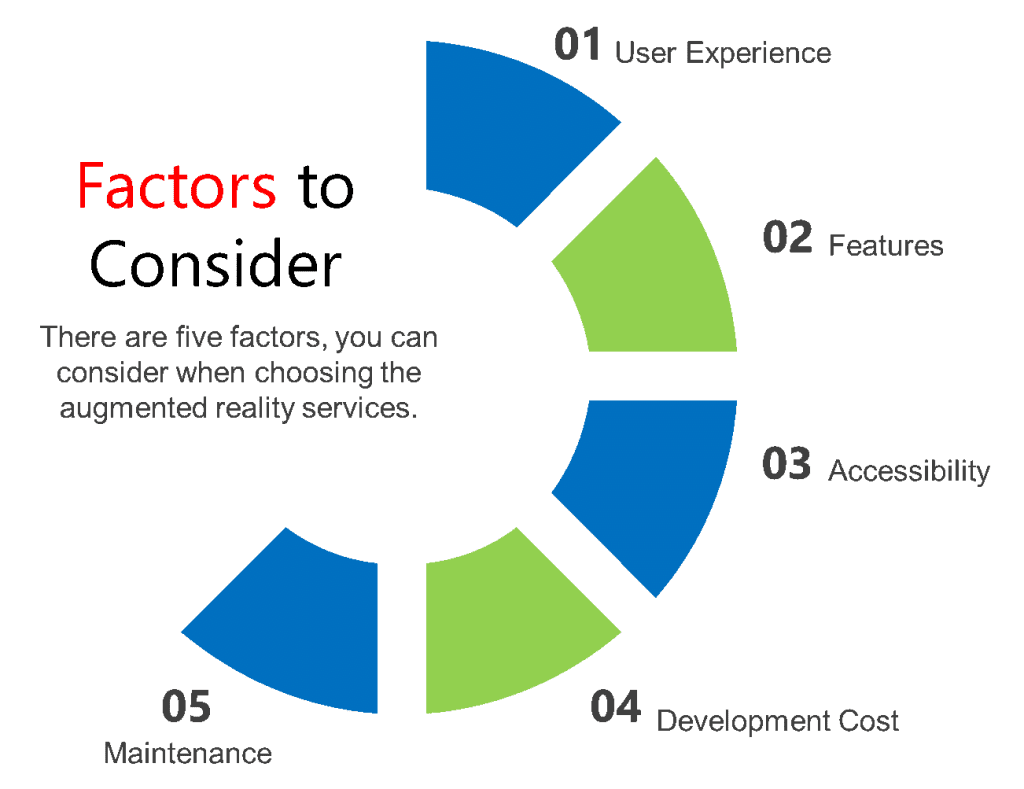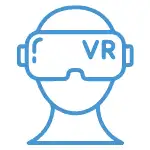Table of Contents
ToggleAs businesses and individuals continue to embrace digital experiences, augmented reality (AR) has become a crucial component in enhancing user engagement. AR enables users to interact with virtual objects and information within their real-world environment. With an increasing demand for augmented reality services, the question arises: which is better, web-based AR or AR apps?
This article will discuss the key differences between web-based AR and app-based AR, their advantages and disadvantages, and popular deployments of both technologies. By the end of this comprehensive guide, you will have a clearer understanding of which AR technology best suits your needs.
1. Introduction to Augmented Reality Services
Augmented reality services are transforming the way people interact with the digital world by overlaying virtual elements onto the real-world environment. This technology can be used in various applications such as entertainment, retail, education, training, and even equipment maintenance and repair.
There are two primary ways to experience AR: AR apps and web-based augmented reality. While app-based AR allows for a wider range of features, web-based AR offers greater accessibility and user-friendliness, making it an effective choice for many businesses.
2. App-Based AR Technology
AR apps provide an immersive augmented reality experience accessible through downloadable apps. This kind of AR is built using tools with powerful depth, surface, object, and lighting recognition capabilities. This allows for extensive placement and tracking of objects in detailed rendered environments.
Developers deploy app-based AR using two primary computer vision frameworks: ARKit and ARCore.
· ARKit
ARKit is Apple’s AR computer vision framework that developers use to create apps exclusively for iOS devices. It has many of the same powerful features as ARCore, such as light estimation, image tracking, and motion capture.
However, ARKit does have some key differences from ARCore. The most important is that support from the Apple ecosystem allows for easier development. Apple improves ARKit by regularly adding new features and upgrades, making it the tool of choice for many developers. ARKit comes at a price of $99 per year.
· ARCore
ARCore is Google’s toolkit for creating app-based AR. Its biggest edge over ARKit is its versatility, as it supports development for both Android and iOS platforms. It’s also free to use. Google Playground is an example of a well-known Android application that uses ARCore as its framework.
The introduction of the LiDAR Scanner in the new iPhone line accelerates the potential of web AR. The new LiDAR Scanner allows rapid plane detection, which enables instant placement of AR objects in the real world. Without scanning the entire scene, it creates a more responsive AR experience.
Pokemon Go is a popular example of an AR technology application deployed on both iOS and Android devices. As such, it is developed with ARCore and ARKit.
3. Web-Based AR Technology
WebAR is an augmented reality experience accessible through a web browser instead of an application. This offers users convenience as there is no need to download a full app. Due to this reduction in steps, WebAR has generated huge demand from companies looking for a frictionless AR option.
Compared to its app-based counterparts, web-based augmented reality does have somewhat limited features. This is because some supporting frameworks are still undergoing development, as well as the data-light nature of browsers. It does allow for less-complex animations, video, image target detection, and interactivity.
The potential of Web AR technology is rapidly growing as mobile browsers fast-track support. Browsers now allow Web AR to use the camera, gyroscope, magnetometer, and accelerometer of devices, giving developers the tools needed to produce creative experiences.
4. Key Differences Between Apps and Web AR Technology
App-based AR has more features than web-based augmented reality due to its ability to make use of higher levels of technology. This enables developers to create a wide range of experiences, such as multi-player gaming, indoor way-finding, and much more.
The better-quality computer vision that ARKit and ARCore offer is the greatest advantage app-based AR has over Web AR. Performance is also better on an app, as higher memory allows for better animation and interactivity.
The biggest drawback of app-based AR technology is getting users to download an application. It’s a data-intensive step that many people would rather do without. Furthermore, it’s more challenging and requires more QA testing to make an app that’s compatible with different phones and operating systems.
On the other hand, Web AR allows users to interact without having to go through any additional steps. Accessing it is as simple as scanning a QR code that links to an AR-enabled website. This enables greater reach, conversions, and engagement, translating to higher sales.
This accessibility has enabled Web AR to reach twice as many mobile devices as its app-based counterpart. It’s particularly attractive to companies seeking to provide their users with a uniform experience across multiple platforms.
Yes, Web AR does not have as much power as application-based AR, but by incorporating creative workarounds, it still offers a very effective and accessible experience.
5. Popular Web AR and App-based Deployments
· Saatchi Art
Saatchi Art’s “View in My Room” feature was the largest-ever deployment of WebAR. It used web AR technology to allow its users to view over 1.4 million works of art in their homes before purchase. This feature sought to boost sales by addressing findings that 70% of art buyers are hesitant to make a purchase before previewing an artwork. This deployment helped Saatchi Art’s mobile transactions grow 100% year-over-year in Q2 2020.
· American Heart Association
The American Heart Association used web-based AR to release a set of interactive characters, games, and features. Distributed to over 18 million children across the US, over an incredible 37% of them engaged with the AR. This raised over $9.4 million through the mobile app alone.
6. Engagement Statistics
AR technology is a rapidly growing space, and many companies are beginning to take notice. ARtillery Intelligence released a report projecting revenue from AR to surge from 12.19 billion in 2024.
This massive growth comes as no surprise if you take a look at how successful and popular AR is. Consumers are very receptive to it, with 48% of them more likely to shop at a retailer offering AR experiences. It also has a 70% higher memory response rate and a 4x longer view time compared to the video.
Brands also have huge success using AR. L’Oreal tripled conversions after allowing customers to try on makeup using AR technology. Herschel Supply Co used AR furniture visualization and subsequently reported a 152% increase in revenue per visit.
Web AR is far more effective in reaching users than app-based AR. There’s a 50% drop-off in engagement for experiences that require downloading. Even after an AR app has been downloaded, only 25% use it beyond the first interaction. Put together; an AR application stands to lose up to 90% of its audience, with only 10% of users re-engaging.
7. Factors to Consider When Choosing Augmented Reality Services
Before deciding on the type of AR technology to adopt, it’s essential to consider the following factors:

1. User Experience
Are you aiming to provide a seamless and frictionless experience to your users? If so, web-based AR may be the better choice.
2. Features
Do you require advanced features and capabilities? App-based AR offers more powerful tools and functionalities.
3. Accessibility
Are you looking to reach a wider audience across multiple platforms? Web AR has a broader reach and is more accessible.
4. Development Cost
App-based AR development can be more expensive due to the need for compatibility across various devices and operating systems.
5. Maintenance
Regular updates and maintenance are required for app-based AR, while web-based AR typically requires less maintenance.
8. Advantages of Web-Based AR
· Ease of Access
Users can access web-based AR experiences directly through a web browser, eliminating the need to download and install an app.
· Cross-Platform Compatibility
Web AR works on multiple platforms and devices, ensuring a consistent user experience.
· Lower Development Costs
Developing a web-based AR experience can be more cost-effective than creating a dedicated app.
· Easier Updates
Updating a web-based AR experience is simpler and faster than updating an app, allowing for more frequent enhancements and improvements.
· Greater Reach
Web-based AR experiences can be shared easily through QR codes or links, helping to increase user engagement and conversions.
9. Advantages of App-Based AR
· Advanced Features
App-based AR offers more powerful tools and features, enabling a richer and more immersive user experience.
· Better Performance
App-based AR experiences typically have better performance due to the ability to leverage device resources more effectively.
· Deeper Integration
App-based AR can integrate more deeply with device hardware and features, such as cameras and sensors, providing additional functionality.
· Greater Customization
Developers have more control over the design and functionality of app-based AR experiences, allowing for greater customization.
· Offline Access
App-based AR experiences can be used offline, providing users with access to AR content even without an internet connection.
Conclusion
The choice between web-based AR and app-based AR depends on your unique requirements and goals. Web-based AR offers greater accessibility, ease of use, and cost-effectiveness, making it an excellent choice for businesses looking to reach a wide audience with minimal friction. On the other hand, app-based AR provides more advanced features and capabilities, making it ideal for more complex and immersive experiences.
When selecting augmented reality services, it’s essential to consider factors such as user experience, features, accessibility, development cost, and maintenance. By carefully evaluating your needs and understanding the strengths and weaknesses of each AR technology, you can make an informed decision and choose the best solution for your business.




























